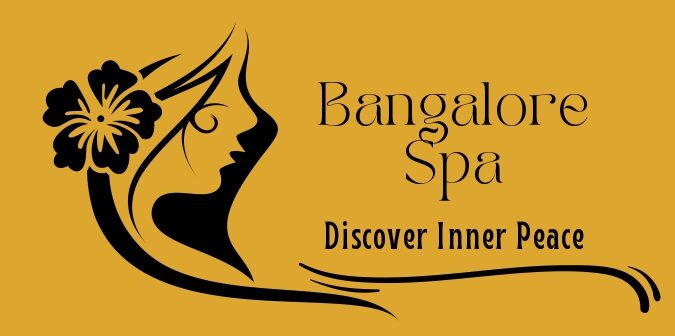From soothing massages to indulgent facials, our curated selection of spa services is designed to renew your body, mind, and spirit. Immerse yourself in ancient healing traditions and modern wellness techniques, all set against the backdrop of Bangalore’s vibrant culture and heritage.
Craniosacral Therapy: Balancing the Body’s Subtle Rhythms
Recent Post
Categories
Have Any Question?

Craniosacral therapy (CST) is a gentle, non-invasive therapeutic technique designed to address and balance the body’s craniosacral system. This system includes the membranes and cerebrospinal fluid that surround and protect the brain and spinal cord. By focusing on these subtle rhythms and the body’s connective tissues, CST aims to enhance overall health and alleviate a range of physical and emotional issues.
Origins and History
Craniosacral therapy has its roots in osteopathy, a medical discipline developed by Dr. Andrew Taylor Still in the late 19th century. The technique was further developed by Dr. William Sutherland, an osteopathic physician, who identified the importance of the cranial bones and their movements in maintaining overall health.
In the 1970s, Dr. John Upledger, an osteopathic physician, expanded on Dr. Sutherland’s work and formalized craniosacral therapy as a distinct therapeutic practice. Dr. Upledger’s research and clinical experience contributed to the development of CST as a gentle and effective therapy for addressing a wide range of health issues.
Techniques and Methodology
Craniosacral therapy involves the application of light touch to assess and address restrictions and imbalances in the craniosacral system. The therapy focuses on the subtle rhythms of the cerebrospinal fluid and the connective tissues surrounding the brain and spinal cord.
Key aspects of craniosacral therapy include:
- Gentle Touch: CST is characterized by its light touch, typically involving pressure that is less than the weight of a nickel. The therapist uses this gentle pressure to palpate the craniosacral rhythm and identify areas of tension or restriction.
- Assessment and Diagnosis: The therapist assesses the craniosacral system by feeling the subtle pulsations of the cerebrospinal fluid and the movement of the cranial bones. This assessment helps to identify areas of restriction and imbalance.
- Release Techniques: The therapist uses various techniques to release restrictions and restore balance to the craniosacral system. These techniques may include gentle stretching, mobilization of the cranial bones, and addressing areas of connective tissue tension.
- Subtle Adjustments: The therapy involves subtle adjustments to the body’s tissues, aiming to promote the body’s natural healing processes and enhance overall health.
Benefits of Craniosacral Therapy
Craniosacral therapy offers a range of benefits for individuals experiencing various physical, emotional, and neurological issues. Key benefits include:
- Pain Relief: CST can help alleviate chronic pain and discomfort by addressing restrictions in the craniosacral system. This may be beneficial for conditions such as migraines, neck pain, and back pain.
- Improved Nervous System Function: By balancing the craniosacral system, CST supports the overall function of the nervous system, which can enhance bodily functions and promote better health.
- Enhanced Relaxation: The gentle nature of CST promotes deep relaxation and reduces stress and tension. This can have a positive impact on mental and emotional well-being.
- Support for Emotional Release: CST can help release emotional tension and trauma stored in the body, supporting emotional healing and overall well-being.
- Improved Sleep: The relaxation induced by CST may contribute to improved sleep quality and reduced insomnia.
- Enhanced Mobility: By addressing restrictions in the craniosacral system, CST can improve range of motion and flexibility, benefiting individuals with musculoskeletal issues.
The Experience
A typical craniosacral therapy session lasts between 60 to 90 minutes. The session begins with a consultation where the therapist discusses the client’s health history, concerns, and goals. The client then lies down fully clothed on a comfortable massage table.
During the session, the therapist uses a light touch to assess the craniosacral rhythm and identify areas of tension or restriction. The therapist gently applies pressure and uses subtle techniques to release restrictions and restore balance. The therapy is generally soothing and relaxing, with clients often experiencing a sense of deep calm and well-being.
Clients may feel immediate relief from tension and discomfort, and the effects of the therapy can continue to improve over time. Many individuals find that CST supports their overall health and enhances their sense of balance and vitality.
Who Can Benefit?
Craniosacral therapy is beneficial for a wide range of individuals, including:
- Those experiencing chronic pain or discomfort, such as migraines, neck pain, or back pain
- Individuals with stress and tension-related issues, including anxiety and insomnia
- People recovering from injuries or surgeries, including traumatic brain injuries
- Individuals seeking support for emotional healing and trauma release
- Those with neurological conditions, such as fibromyalgia or multiple sclerosis
CST is generally considered safe for most people, but it may not be suitable for individuals with certain medical conditions, such as severe osteoporosis, recent head injuries, or certain types of brain surgery. It is important to consult with a qualified craniosacral therapist and a healthcare provider to determine if CST is appropriate for your specific needs and health conditions.
Conclusion
Craniosacral therapy is a gentle and effective therapeutic approach that addresses imbalances and restrictions in the craniosacral system. By promoting relaxation, enhancing nervous system function, and supporting overall health, CST offers a holistic approach to managing pain, stress, and emotional issues. Whether you’re seeking relief from physical discomfort, emotional healing, or simply a sense of well-being, craniosacral therapy provides a subtle yet powerful way to support your health and vitality.

Bangalore Best SPA by Hardev
Copyright © 2024| powered by Wiz Business Services.










